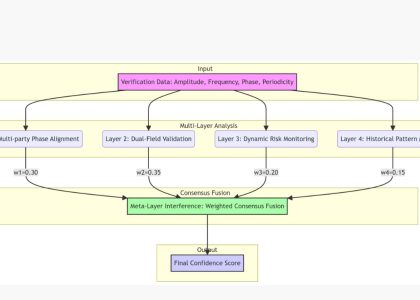Introduction:
Efficient inventory management plays a vital role in supply chain optimization, ensuring that businesses can meet customer demand while minimizing costs and maximizing profitability. In this blog post, we will explore seven best practices for effective inventory management. By implementing these practices, companies can achieve better inventory control, improved order fulfillment, and enhanced overall supply chain performance.
Conduct Regular Demand Forecasting:
Accurate demand forecasting forms the foundation of effective inventory management. By analyzing historical data, market trends, and customer insights, businesses can predict future demand more accurately. This enables them to optimize inventory levels, avoid stockouts or overstocking, and ensure the right products are available at the right time.
Adopt Just-in-Time (JIT) Inventory Management:
JIT inventory management minimizes inventory holding costs by synchronizing supply with demand. Rather than stockpiling excess inventory, companies using JIT focus on receiving goods when needed. This practice reduces carrying costs, improves cash flow, and minimizes the risk of obsolescence or depreciation.
Implement ABC Analysis:
ABC analysis categorizes inventory items based on their value and importance. Classifying items as A (high-value), B (medium-value), and C (low-value) enables businesses to prioritize their focus and allocate resources accordingly. By applying different inventory control measures for each category, such as frequent monitoring for A items and less frequent for C items, companies can optimize their inventory management efforts.
Embrace Technology and Automation:
Leveraging technology and automation tools can significantly streamline inventory management processes. Inventory management software, barcode systems, and RFID (Radio Frequency Identification) technology help track and manage inventory more efficiently. These tools provide real-time visibility, automate data entry, facilitate accurate stock counts, and enable timely reordering, leading to improved inventory accuracy and operational efficiency.
Establish Effective Supplier Relationships:
Developing strong partnerships with suppliers is crucial for successful inventory management. Clear communication, collaborative forecasting, and timely information exchange can help prevent stockouts, reduce lead times, and ensure a reliable supply of goods. Establishing mutually beneficial agreements and maintaining transparent relationships can optimize inventory levels and improve overall supply chain performance.
Implement Cross-Functional Collaboration:
Effective inventory management requires collaboration across different departments within an organization. Close cooperation between sales, procurement, operations, and finance teams helps align inventory levels with customer demand and strategic goals. Regular communication, shared insights, and coordinated decision-making enable a holistic approach to inventory management, reducing excess stock and improving inventory turnover.
Continuously Monitor and Optimize:
Inventory management is an ongoing process that requires continuous monitoring and optimization. Regularly reviewing key performance indicators (KPIs) such as stock turnover ratio, fill rate, and carrying costs can provide insights into the effectiveness of inventory management practices. Analyzing these metrics and making necessary adjustments allows companies to refine their inventory strategies and drive continuous improvement.
By implementing these seven best practices, businesses can achieve efficient inventory management, improve supply chain performance, and enhance customer satisfaction. Effective inventory management not only minimizes costs but also ensures that the right products are available when customers need them, ultimately contributing to business success.
In the realm of supply chain management, analyzing key inventory management metrics and making necessary adjustments is a fundamental practice that enables companies to refine their inventory strategies and drive continuous improvement. Let’s delve deeper into the significance of this process within the supply chain context:
-
Optimization of Inventory Levels: By regularly analyzing metrics such as stock turnover ratio, companies can assess how efficiently their inventory is moving through the supply chain. This analysis helps identify inventory levels that are too high or too low, allowing for adjustments to be made. For instance, if the stock turnover ratio is low, indicating slow inventory movement, companies can implement strategies like JIT (Just-in-Time) inventory management or revise demand forecasting methods to better align inventory levels with customer demand. Conversely, if the turnover ratio is high, it may indicate the need to increase inventory levels to avoid stockouts and ensure smooth order fulfillment.
-
Improved Customer Service and Satisfaction: Analyzing inventory metrics enables companies to identify areas where customer service and satisfaction can be improved. For instance, monitoring fill rate—a measure of the percentage of customer orders that can be fulfilled from available stock—allows companies to determine if they are consistently meeting customer demand. If the fill rate is low, adjustments can be made, such as increasing safety stock levels or improving demand forecasting accuracy, to enhance customer service by reducing backorders or stockouts. Regular analysis and adjustments based on these metrics help ensure that customers receive their orders on time and in full, leading to improved satisfaction levels.
-
Cost Reduction and Efficiency: Continuous analysis of inventory metrics allows companies to identify opportunities for cost reduction and improved efficiency. Metrics like carrying costs, which include expenses associated with holding inventory such as warehousing, insurance, and obsolescence, can be monitored to optimize inventory levels and minimize unnecessary costs. By making data-driven adjustments to inventory strategies, companies can reduce carrying costs by avoiding excessive stock and aligning inventory levels with actual demand. This leads to improved efficiency in the supply chain, reduced working capital requirements, and enhanced financial performance.
-
Agility and Adaptability: The analysis of inventory metrics provides valuable insights into supply chain performance and enables companies to adapt to changing market conditions and customer preferences. For example, by monitoring inventory turnover by product category or SKU, companies can identify slow-moving or obsolete items and take proactive measures such as product rationalization, promotions, or liquidation to reduce inventory holding costs. By making timely adjustments based on these insights, companies can improve agility, optimize their product mix, and allocate resources more effectively to meet evolving customer demands.
-
Continuous Improvement: Analyzing inventory metrics and making necessary adjustments is part of a continuous improvement mindset within supply chain management. It allows companies to refine their inventory strategies over time based on real-time data and performance feedback. By embracing a culture of continuous improvement, companies can identify bottlenecks, inefficiencies, and areas for optimization within their inventory management processes. This iterative approach fosters innovation, enhances competitiveness, and drives ongoing advancements in supply chain efficiency.
In conclusion, analyzing inventory metrics and making necessary adjustments is a critical practice within the supply chain. It empowers companies to optimize inventory levels, improve customer service, reduce costs, enhance agility, and drive continuous improvement. By leveraging these insights, companies can align their inventory strategies with customer demand, achieve operational excellence, and ultimately gain a competitive advantage in today’s dynamic business landscape.
Try our Free EOQ Calculator : HERE
Best Inventory Management Softwares : HERE




